[Newsbits] 17-20.03.2024 – Vechur Cow, SOrTeD rocket, Grok Chatbot & More


The Vechur cow, originating from the village of Vechoor in Kerala, India, is renowned for being the world’s smallest cattle breed, a status confirmed by the Guinness World Records. This breed is characterized by its diminutive stature, with an average length of 124 cm and height of 87 cm, and a weight of around 130 kg. Despite their small size, Vechur cows are prolific milk producers, yielding up to 3 liters per day. This milk is noted for its medicinal properties, supported by both Ayurvedic tradition and scientific research, particularly due to its A2 beta casein content, which is associated with health benefits over the A1 variant found in most commercial dairy products.
Conservation efforts for the Vechur cow have been significant, led by Sosamma Iype and her team since 1989, culminating in the formation of the Vechur Conservation Trust in 1998. These efforts were recognized when the breed was listed on the FAO’s World Watch List of Domestic Animal Diversity in the ‘Critical-Maintained Breeds List’ in 2000, highlighting the breed’s risk of extinction and the urgent need for its preservation.
Controversy once surrounded the Vechur cow in 1997 when environmentalist Vandana Shiva accused The Roslin Institute in Scotland of attempting to patent the cow’s genetic code, a charge that was later found to be baseless. Today, the Vechur cow is celebrated not only for its unique size and the medicinal value of its milk but also as a symbol of successful conservation efforts, with more than 5,000 cows now found across India. These cows continue to be a focus of conservation and breeding programs, supported by partnerships with various national and international organizations
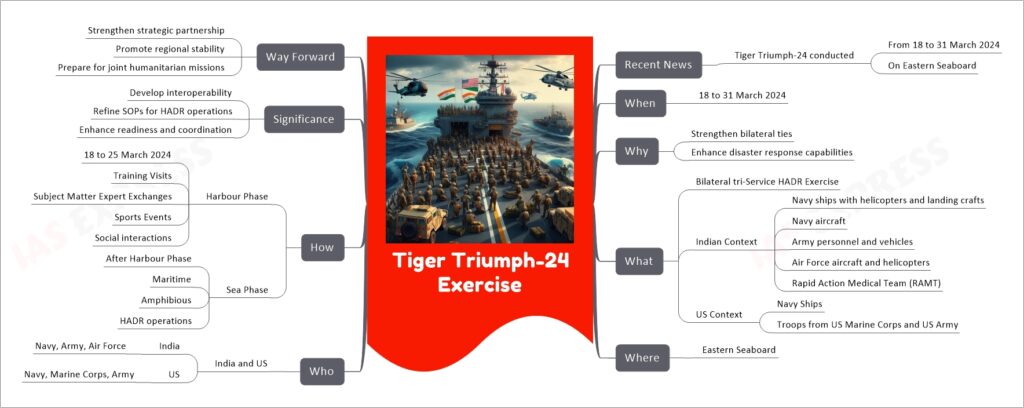
The Tiger Triumph-24 exercise is a bilateral tri-service Humanitarian Assistance and Disaster Relief (HADR) operation conducted between India and the United States from March 18 to 31, 2024, on the Eastern Seaboard. This exercise involves comprehensive participation from both nations’ armed forces, including the Navy, Army, and Air Force, with a focus on developing interoperability, refining Standard Operating Procedures (SOPs), and enhancing readiness for HADR operations. The exercise unfolds in two phases: the Harbour Phase, involving training, expert exchanges, and social interactions, and the Sea Phase, where maritime, amphibious, and HADR operations are conducted in simulated scenarios. Tiger Triumph-24 serves to strengthen the strategic partnership between India and the US, enhancing their disaster response capabilities and promoting regional stability .
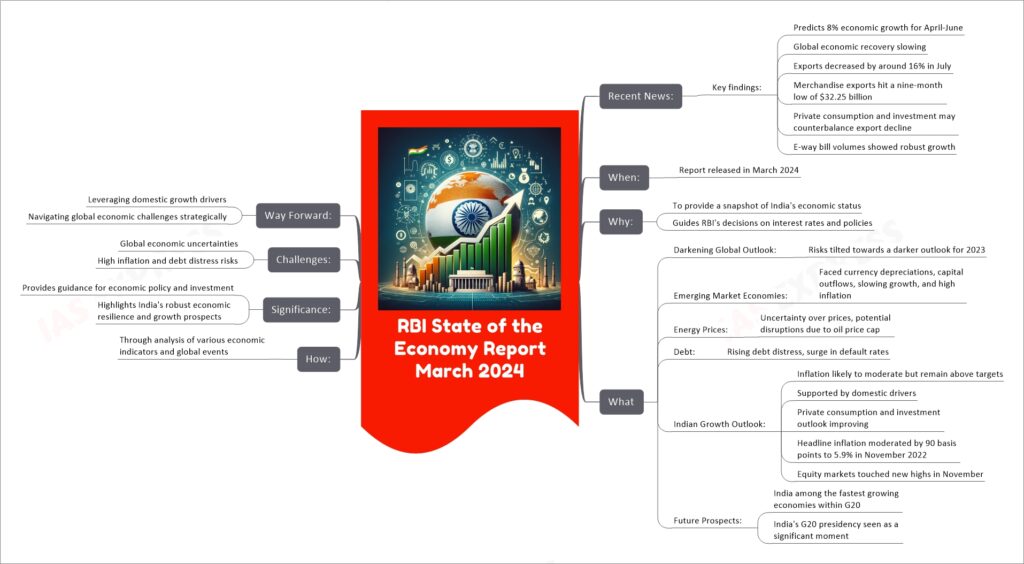
The RBI’s State of the Economy Report from March 2024 serves as an important indicator for India’s economic health and future direction. It predicts an 8% economic growth for the April-June quarter, despite global economic challenges and a slowdown in exports. The report highlights various economic indicators, including inflation rates, investment outlooks, and equity market performances, providing a comprehensive view of the potential challenges and opportunities facing India’s economy. The significance of this report lies in its ability to guide the RBI’s monetary policies and inform investors and the public about the economic landscape, ensuring informed decision-making at all levels.
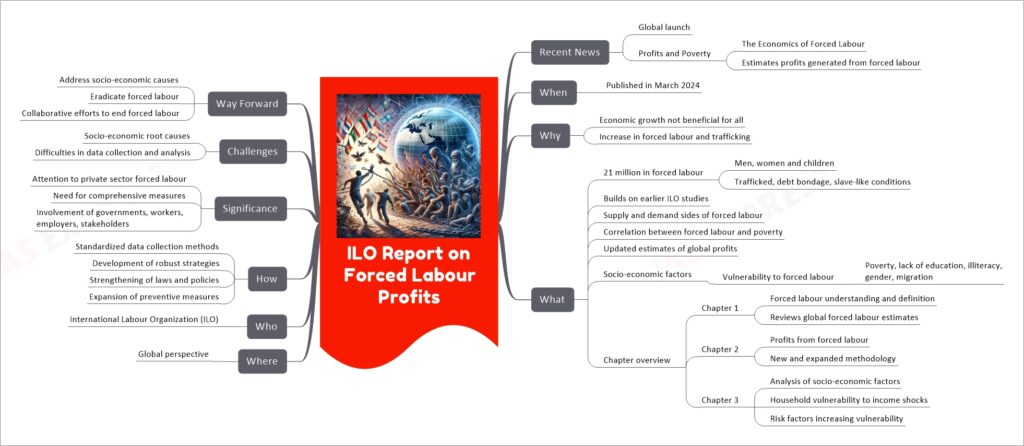
The ILO Report on Forced Labour Profits, released in March 2024, reveals the staggering reality of 21 million individuals trapped in forced labour globally, generating substantial illegal profits. This comprehensive study builds on previous research, highlighting the intricate relationship between forced labour and poverty. It presents updated profit estimates and delves into the socio-economic factors that predispose individuals to such exploitation, including poverty, lack of education, and migration. The report underscores the urgent need for a multifaceted approach involving governments, businesses, and other stakeholders to address the root causes of forced labour and to implement effective prevention and eradication strategies.
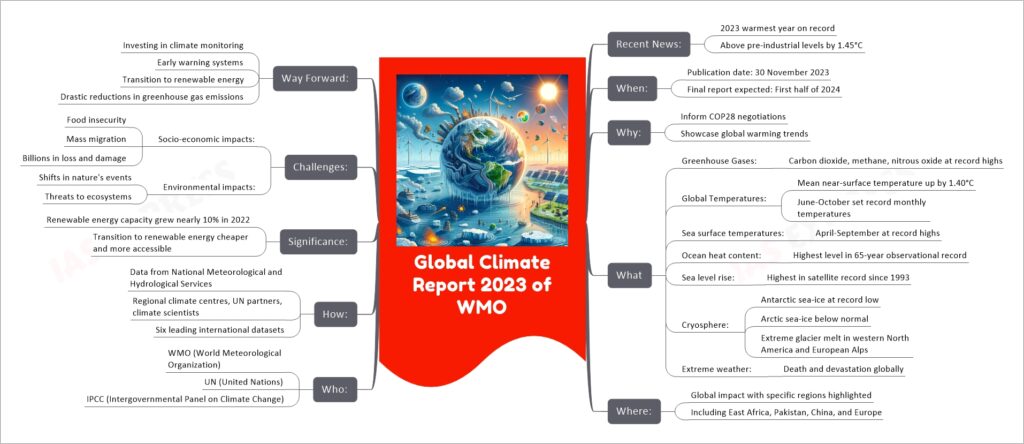
The Global Climate Report 2023 from the World Meteorological Organization (WMO) starkly underscores that 2023 was the warmest year on record, with global temperatures soaring to 1.45°C above pre-industrial levels. This alarming increase spotlights the critical need for concerted global action towards sustainable energy sources and drastic emissions reductions. The report, poised to influence discussions at COP28, aggregates data that paints a dire picture of rising sea levels, shrinking polar ice, and an escalation in extreme weather events, all contributing to significant environmental, economic, and human tolls. Amidst the challenges, the report identifies a silver lining in the growth of renewable energy capacities and the reduced costs of transitioning to such sustainable sources, emphasizing the potential for mitigative action against climate change’s worst effects.
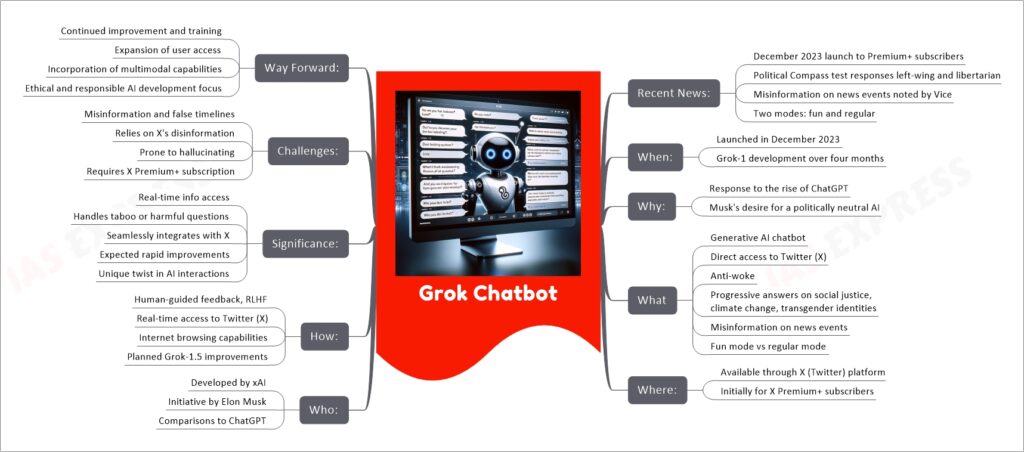
Grok Chatbot, a creation of xAI initiated by Elon Musk, was introduced as a direct competitor to ChatGPT. It distinguishes itself by offering real-time access to Twitter (X), enabling it to discuss current events and display real posts from X as references. Unlike ChatGPT, Grok aims for minimal political correctness and has been characterized by its wit and edginess, including a “fun mode” for more colorful language. However, its reliance on X for real-time information has led to criticism over misinformation and a tendency to promote unverified claims. It’s available exclusively to X Premium+ subscribers, with future updates expected to enhance its capabilities and ethical framework
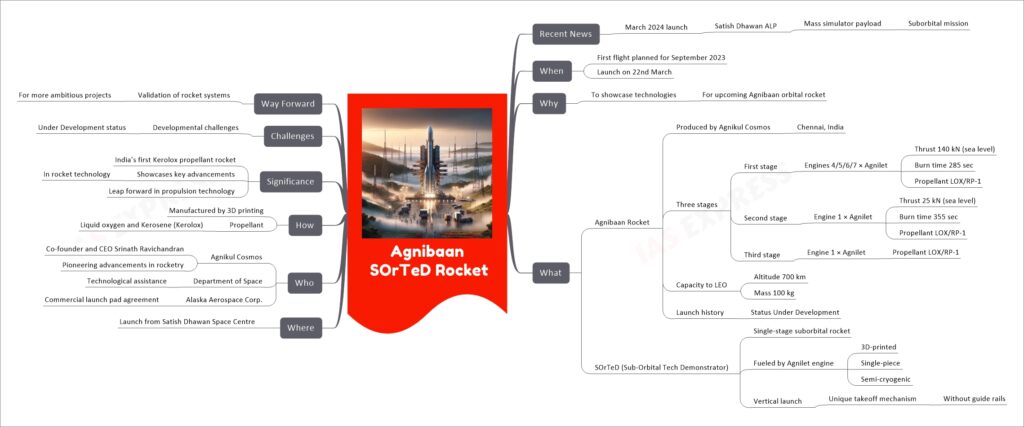
The Agnibaan SOrTeD Rocket is an innovative project under development by Agnikul Cosmos, a space startup based in Chennai, India. The Agnibaan rocket, with its three stages, is designed to place satellites into low Earth orbit, showcasing India’s growing capabilities in space technology. The SOrTeD (Sub-Orbital Tech Demonstrator), specifically, is a single-stage suborbital rocket intended to demonstrate the technologies that will be used in the Agnibaan orbital rocket. A notable aspect of this initiative is the use of 3D printing technology for manufacturing the entire rocket, including its Agnilet engine, a single-piece, semi-cryogenic engine fueled by a mixture of liquid oxygen and kerosene. The planned launch from the Satish Dhawan Space Centre marks a significant milestone, not only as India’s first rocket to utilize Kerolox propellant but also for its innovative vertical launch mechanism that eschews traditional guide rails. This project represents a leap forward in propulsion technology and has the potential to significantly impact India’s capabilities in space exploration and satellite deployment.

LAMITIYE-2024 is a significant joint military exercise between India and Seychelles, symbolizing the deep friendship and cooperation between the two nations. This biennial training event, held since 2001, brings together 45 personnel each from the Indian Gorkha Rifles and the Seychelles Defence Forces (SDF) to enhance interdiction operations in peri-urban scenarios, promote interoperability during peacekeeping operations, and build bilateral military ties. The 10th edition of this exercise includes showcasing modern equipment, tactical exercises in a semi-urban environment, and a series of field training exercises, discussions, and demonstrations, culminating in a verification exercise. This collaboration not only strengthens military capabilities but also fosters mutual understanding and partnership between the two armies.
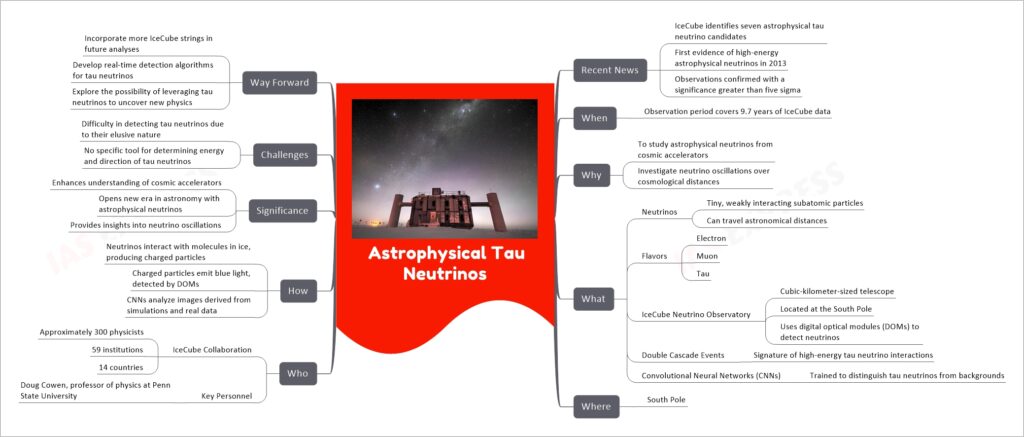
Astrophysical tau neutrinos are subatomic particles that play a crucial role in understanding cosmic phenomena and the fundamental aspects of the universe. These neutrinos are challenging to detect due to their weak interaction with matter, but their observation can provide valuable insights into cosmic accelerators and the processes that generate high-energy particles in space. The IceCube Neutrino Observatory, located at the South Pole, has successfully identified several candidate events for astrophysical tau neutrinos, marking a significant advancement in the field of astrophysics. This discovery opens new avenues for research, including the study of neutrino oscillations over vast cosmological distances and the exploration of the underlying mechanisms of neutrino production from astrophysical sources.
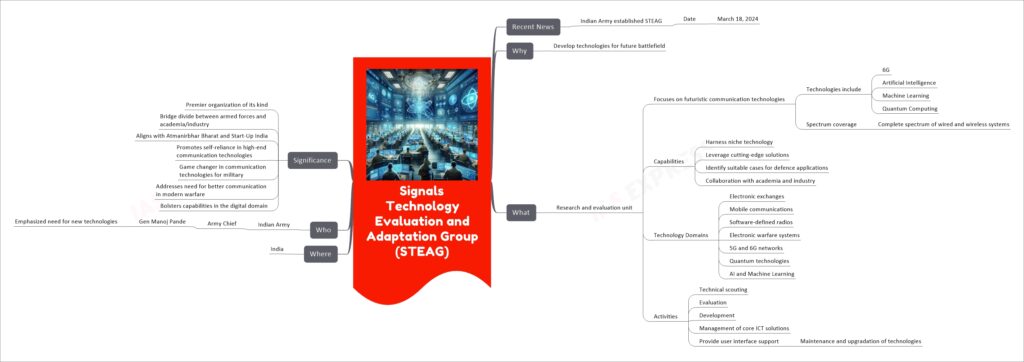
The Signals Technology Evaluation and Adaptation Group (STEAG), established by the Indian Army, is an elite unit focusing on the research and evaluation of futuristic communication technologies such as 6G, AI, machine learning, and quantum computing. Created to prepare for future battlefield scenarios, STEAG aims to harness niche technologies, work with academia and industry, and promote self-reliance in high-end communication tech. It will explore various technology domains, including mobile communications and electronic warfare, to enhance the Army’s capabilities in the digital domain.
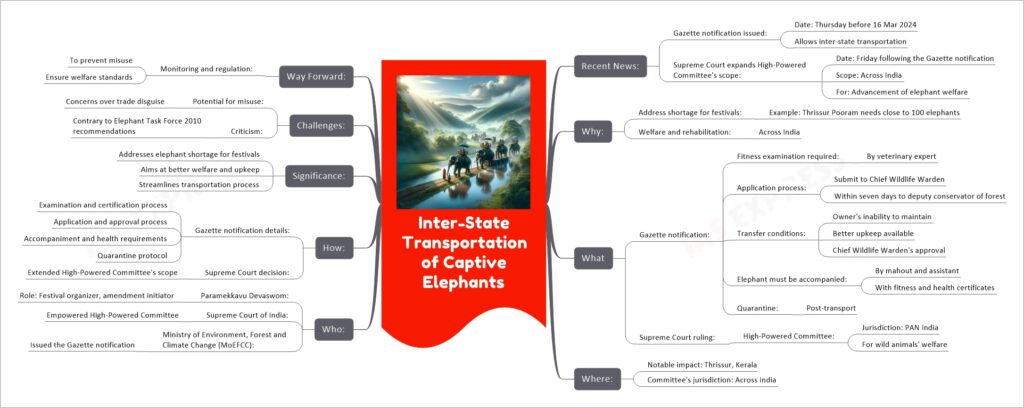
The central government recently issued a Gazette notification that allows the inter-state transportation of captive elephants, a move that came ahead of the Lok Sabha elections and was welcomed by festival organizers in Kerala, notably for the Thrissur Pooram festival which requires close to 100 elephants. The Supreme Court has also expanded the scope of a High-Powered Committee, giving it jurisdiction across India to enhance the welfare, care, and rehabilitation of elephants and other wild animals. This committee is empowered to conduct necessary checks and recommend actions for the welfare of these animals across the country. The regulations require a fitness examination of the elephants before transportation, submission of an application by the owner to the Chief Wildlife Warden, and quarantine of the elephants post-transportation. While these moves have been welcomed for addressing the shortage of elephants for cultural festivals and their welfare, there have been criticisms and concerns over potential misuse for trade under the guise of transfer.
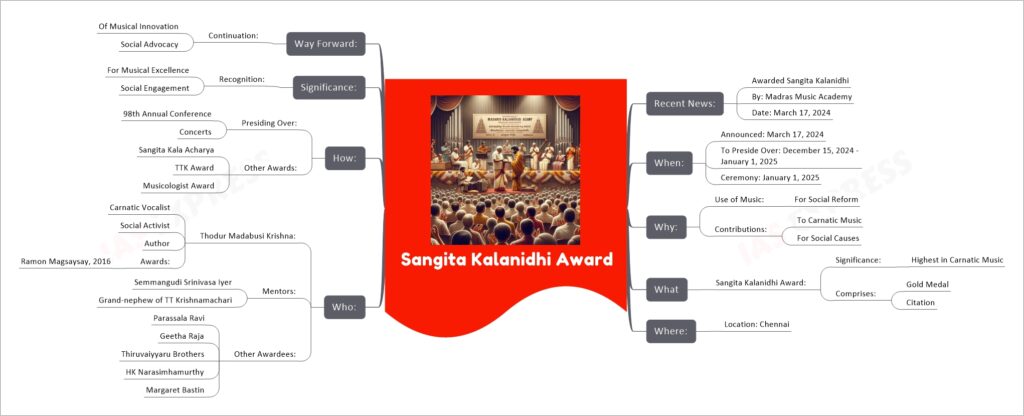
TM Krishna, a prominent Carnatic musician known for his efforts in using music as a medium for social reform, has been conferred the prestigious Sangita Kalanidhi Award by the Madras Music Academy. The award, considered the highest accolade in Carnatic music, recognizes Krishna’s contributions to the art form and his engagement in various social causes. Krishna is not only celebrated for his musical talent but also for his activism and writings that address and challenge societal issues. This acknowledgment comes as a testament to his impactful career that spans music, literature, and social activism. The ceremony is part of the Academy’s annual tradition, highlighting the deep-rooted cultural heritage and continuing evolution of Carnatic music.
